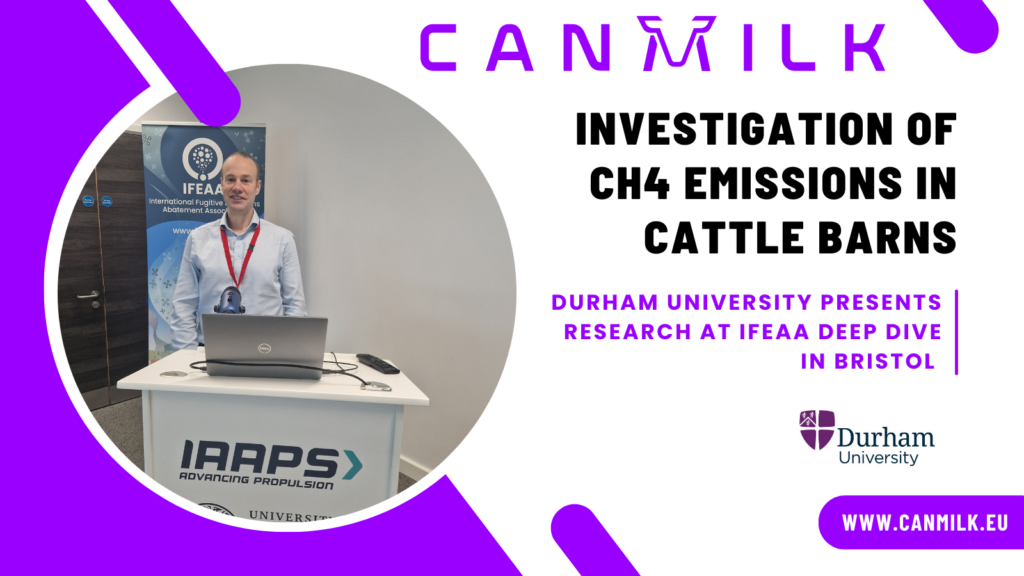
Durham University presented research from the CANMILK project at the IFEAA Deep Dive event in Bristol in November 2024. The presentation included experimental results and computational modelling efforts to address methane emissions in dairy barn housing.
The work is investigating the key factors affecting methane concentrations in housed cattle, particularly focusing on methane production, ventilation, and environmental conditions, with the intention of understanding how a direct air capture system could be implemented within the barn.
Field measurements in a Finnish barn
Field measurements undertaken by VTT and Valio in a modern Finnish barn revealed variations in methane concentrations due to the amount of ventilation provided to the barn. Typically, in summer with increased ventilation, concentrations ranged from 0-20 ppm, while in winter with decreased ventilation, concentrations were higher, ranging from 0 to 80 ppm. Methane escaped mainly through open walls and ridge ventilation stacks, with wind having a significant influence on its dispersal.
Computational modelling and simulations
In addition to field measurements, Durham University performed computer simulations to analyse methane behaviour. These simulations included 360 scenarios of natural ventilation and 48 scenarios of mechanical ventilation, examining variables such as airflow, temperature, and the distribution of methane concentration.
The computational modelling provided valuable insights into how methane emissions mix with ventilating airflow, revealing that the concentration levels were primarily influenced by the amount of methane produced inside the barn and the volume of ventilation entering the barn. Secondary factors, such as buoyancy and geometry, played a lesser role. The simulations incorporating mechanical ventilation, aimed at identifying the best locations for ducts and scrubbers, demonstrated that direct air capture systems could be effective at capturing methane, but natural ventilation must be minimised to ensure that all air is processed.
Barn modelling and conclusions
Durham University used the measurements and computational data to verify a model for methane concentration and temperature within a barn. Humidity and other emissions were also investigated. The barn model is an important tool for the implementation of methane mitigation strategies. It has identified the best locations for air treatment ducts and scrubbers, while providing detailed air quality profiles. The research provides valuable insights for reducing greenhouse gas emissions in agriculture and contributes to the CANMILK project’s goal of promoting sustainable agricultural practices.
